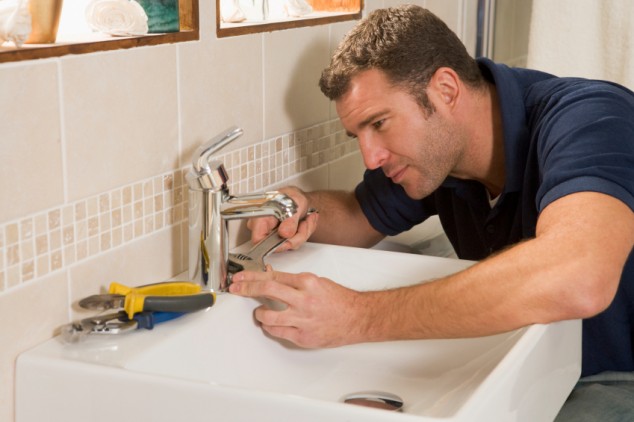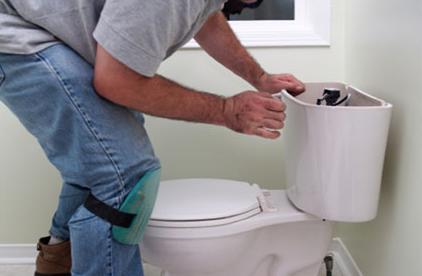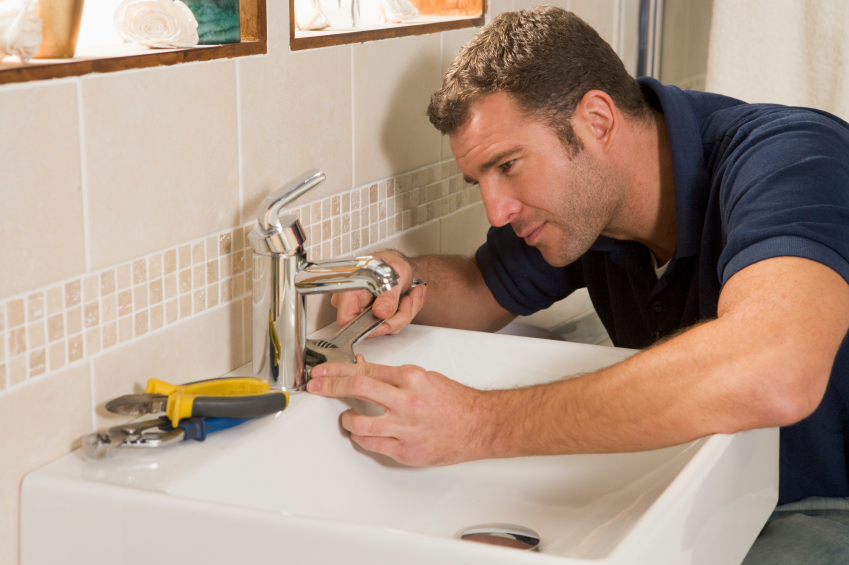Nowadays, the term ‘maintenance’ means two things: ‘fixing something broken’ and ‘doing everything to prevent something from getting broken.’When fixing different subsystems of your home plumbing system or making sure that none of them break, there are so many things that need to be done. These are some of them:
What to do to prevent plumbing fixtures from malfunctioning/leaking/breaking
Kitchen
- Cleaning the aerator
Kitchen taps usually have aerators. Lime and sediment can build up on these and cause low water pressure. Here are the steps to removing any build-up from aerators.
- Turn the aerator counter-clockwise with your hand to unscrew it.
- Once unscrewed, take it apart.
- With a small brush dipped in a vinegar bowl, brush the parts of the aerator. This removes sediment build-up.
- If sediment and lime have accumulated on the aerator, dip it in a vinegar-filled bowl overnight.
- Assemble the aerator and put it back to the tap.

- Clean your garbage disposal unit
As time passes, food bits can build-up in your garbage unit, causing the development of nasty odours. This is why it is very important that you clean it at least once a week. Here are the things you need to do:
- Put citrus peels and ice cubes down the disposal unit and switch it on, making sure to run it for thirty seconds.
- Pour liquid dish soap while the garbage disposal is running.
- Run cold water down the disposal unit for around thirty seconds.
Bathroom
- General toilet maintenance
- One great way to prevent the formation of clogs is by flushing hot water down the drain once a week.
- Flush enzymatic cleaner down the toilet once a month. The enzymes in the cleaner will melt organic matter and remove any odours from the pipes.
- Pour baking soda and vinegar (1/2 cup each) down the toilet bowl and flush.
- Feed the drain snake down the toilet once every six months to ensure that there is no build-up in the drain pipe.
- Clean the exterior.
- Don’t forget to keep the toilet tank clean. To clean the toilet tank, pour bleach down the tank and flush the water three times after ten minutes.

General
- Preparing your plumbing systems for winter
Before the coming of the cold winter season, do these things to prevent the cold from damaging different parts of your plumbing.
- Drain all the water from the water sprinkler lines and swimming pool following the instructions of the manufacturer and installer. Unless directed, avoid putting antifreeze, as it is a harmful chemical that can damage pets, humans, and the environment.
- Any hoses used outside of the home should be removed, drained of water, and then stored. Close any inside valves that supply hose bibs outdoors, then open the outdoor hose bibs to drain the water. Make sure that the outside valve stays open so remaining water expands without breaking the pipe.
- Check other parts of the home for any water lines in unheated places, like the crawl space, garage, under cabinets, and the basement. Insulate all water pipes in those areas.
- Consider the installation of products that help insulate water pipes. Some great options include pipe sleeves, heat cable, and heat tape. A cheaper option, one you can go with if you live in a place that does not often experience below-zero temperatures, is a bunch of old newspapers.
During cold weather, here are some things you can do:
- If you found water lines in your garage, keep the garage doors closed.
- Open bathroom and kitchen cabinet doors to permit the circulation of warmer air around plumbing. Ensure that you move household chemicals, such as cleaners, away from reach of kids and the elderly.
- If the weather outside is so cold, let cold water drip out of the tap served by every exposed pipe. Running water through it helps to prevent the freezing of pipes.
- The thermostat should stay in the same temperature during night and day.
- If on a trip somewhere else during the winter, leave the heater on. Make sure that it is set to a temperature not lower than 55 degrees Fahrenheit.
Future protection against frost:
- You might want to consider transferring exposed pipes to offer additional protection from freezing.
- You can contact a professional to relocate all the pipe lines in your home in the event of a remodelling.
- Insulate crawl spaces, attics, and basements. Insulation keeps temperatures in the said areas warm.
- For more information, you can talk to a plumber or construction professional.
- Preventing clogged drains
There are many things you need to do to prevent the clogging of drains. One is by keeping scraps and grease out of drains and disposing them in appropriate containers instead. Another is by filling sinks and tubs with water and then pulling the stopper out. The sheer weight and volume of the water will force the clog to dislodge.
If, however, you are not comfortable using that much water or if you think it is not necessary, pour boiling water down the drains instead, followed by vinegar. Let the vinegar sit for ten minutes, then pour a second batch of boiling water down it.
- Keeping sewer lines/septic tank clear
If your plumbing system is connected to municipal sewers, hire plumbers to snake your sewage cleanout once every two or three years. This service removes any tree roots that have worked into the pipes.
However, if your home plumbing is connected to a septic system, then get it pumped once every five years.
What to do to fix something that has malfunctioned/leaked/broken
General
- Thawing frozen pipes
- Assume that the pipe has frozen if only a trickle of water comes out when you switch the tap on. The most likely areas for frozen pipes include places where water enters the property through its foundations and areas against exterior walls.
- Keep the tap open. While treating the frozen pipe and the area that has frozen starts melting, water will start flowing through frozen areas. By keeping the tap open, you facilitate in the melting of ice.
- Apply a good amount of heat to frozen pipe sections using a hair dryer, an electric heating pad, a portable heater, or by wrapping the pipes with a number of towels soaked in a basin filled with hot water. Avoid using kerosene or propane heaters, blowtorches, or other flame devices.
- Continue applying heat until you have fully restored the water pressure. If you cannot find the frozen pipe or if it isn’t accessible, contact a licensed plumber to help you out.
- Check every tap in your home to know if the pipes attached to them are also frozen.
- Opening clogged drains
Clogged drains are a hassle. Here are the things you can do about them:
- For drains that are not completely clogged, you can run hot water down them.
- Pour drain cleaners into the drain if the above method does not work. They can do harm to the skin and eyes, so be careful when using them.
- A plunger is also a good option for opening the drain. Just put it over the drain and pump it up and down repeatedly. The suction will cause the build-up of debris to dislodge.
- Cleaning the drain trap may be needed if the above steps still fail. When doing this task, put a bucket underneath the trap to catch debris or water.
- Feed a drain snake down the drain, making sure to turn it until it no longer has any debris.
- Pipe leak instant fixes
The moment you find signs of a leaky pipe, act on it right away. Here are some ways to quickly (and temporarily) fix it:
Pipe Clamps
Used along with rubber strips, they do well to keep leaks in check until a professional can fix it permanently.
Epoxy
Use this if your plumbing has cast iron pipes. They patch leaks.
Wraps
Wraps harden around the parts of the pipe that have cracked.
Repair sleeves
These items are perfect for repairing pinhole-sized leaks or joints. These cover the leak for a time.
Call a plumber once you have placed any of the aforementioned temporary fixes on the leak. More information on a reliable plumbing service can be found here: http://www.drdripplumbing.com.au.Do the same if you find plumbing problems that you cannot handle.

